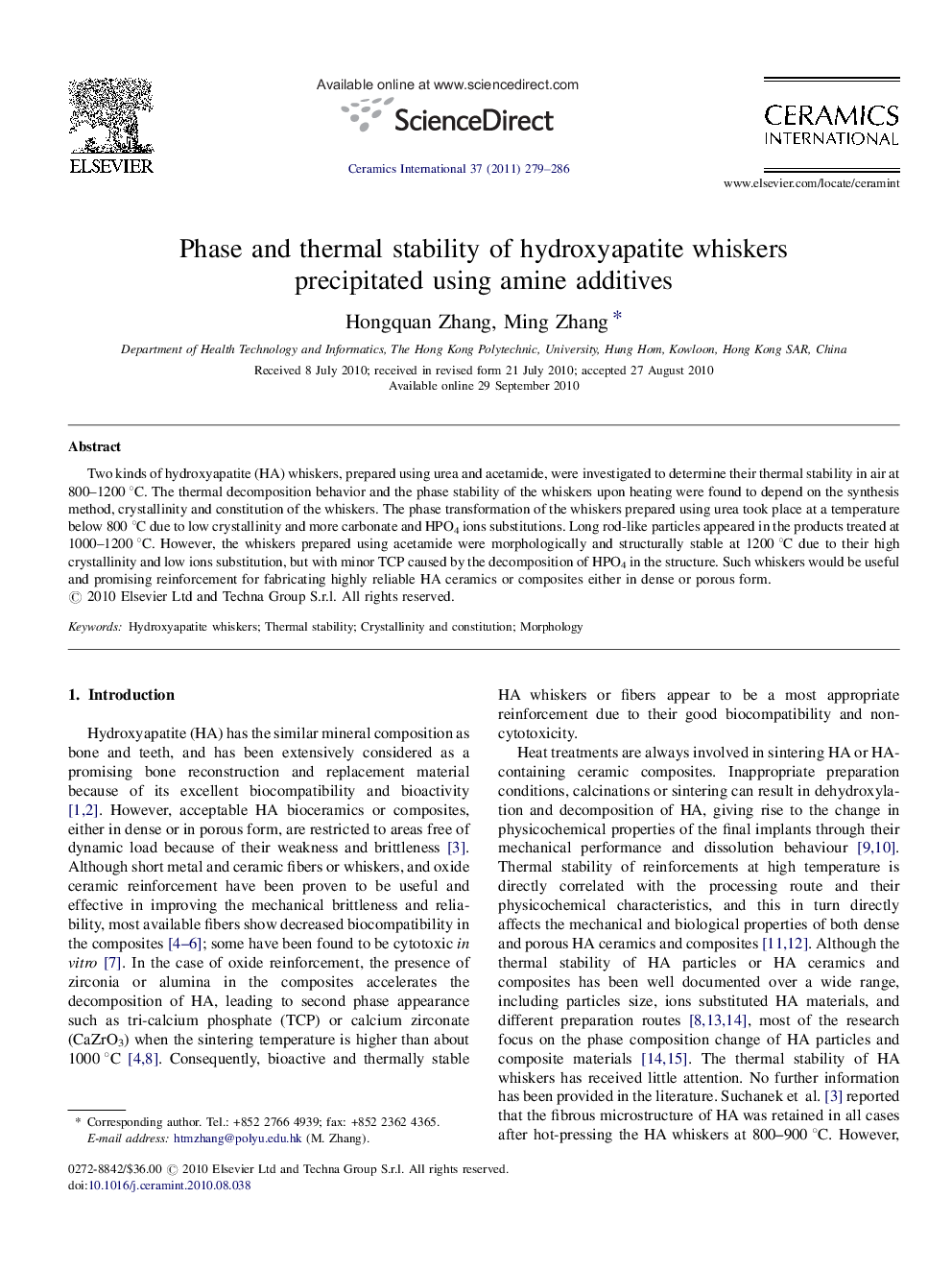| Article ID | Journal | Published Year | Pages | File Type |
|---|---|---|---|---|
| 1463993 | Ceramics International | 2011 | 8 Pages |
Two kinds of hydroxyapatite (HA) whiskers, prepared using urea and acetamide, were investigated to determine their thermal stability in air at 800–1200 °C. The thermal decomposition behavior and the phase stability of the whiskers upon heating were found to depend on the synthesis method, crystallinity and constitution of the whiskers. The phase transformation of the whiskers prepared using urea took place at a temperature below 800 °C due to low crystallinity and more carbonate and HPO4 ions substitutions. Long rod-like particles appeared in the products treated at 1000–1200 °C. However, the whiskers prepared using acetamide were morphologically and structurally stable at 1200 °C due to their high crystallinity and low ions substitution, but with minor TCP caused by the decomposition of HPO4 in the structure. Such whiskers would be useful and promising reinforcement for fabricating highly reliable HA ceramics or composites either in dense or porous form.
